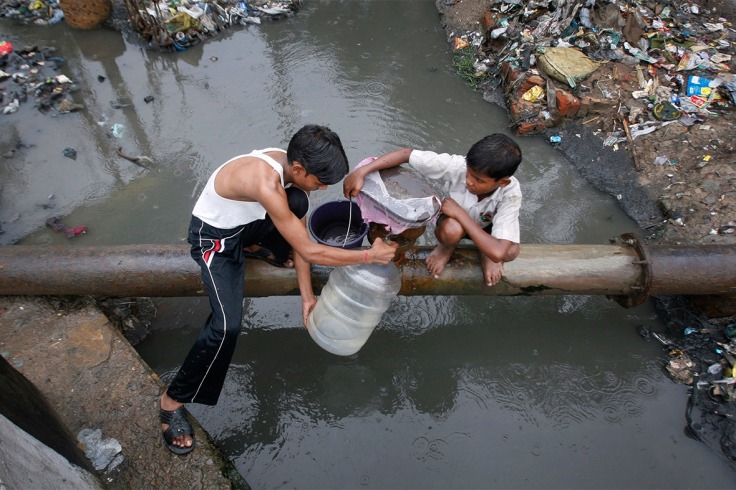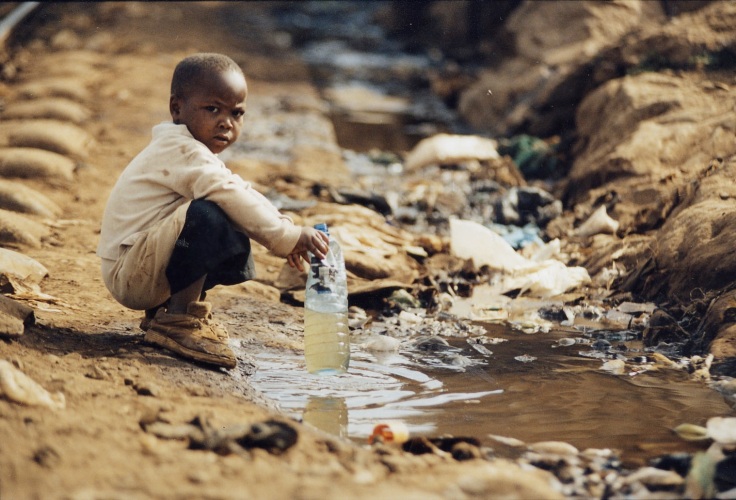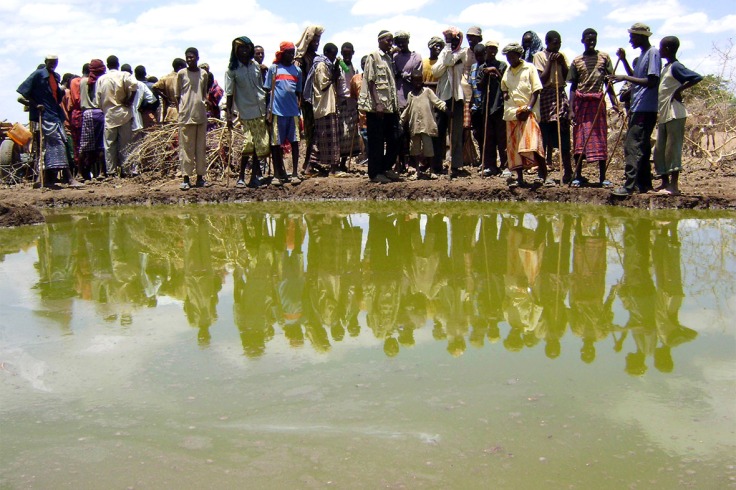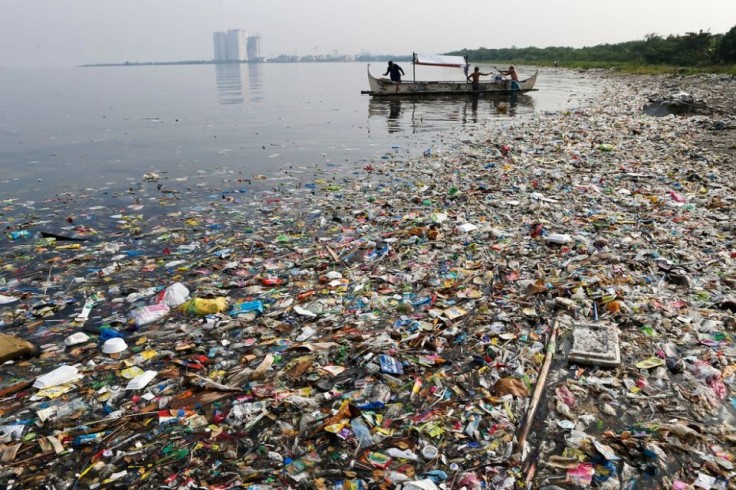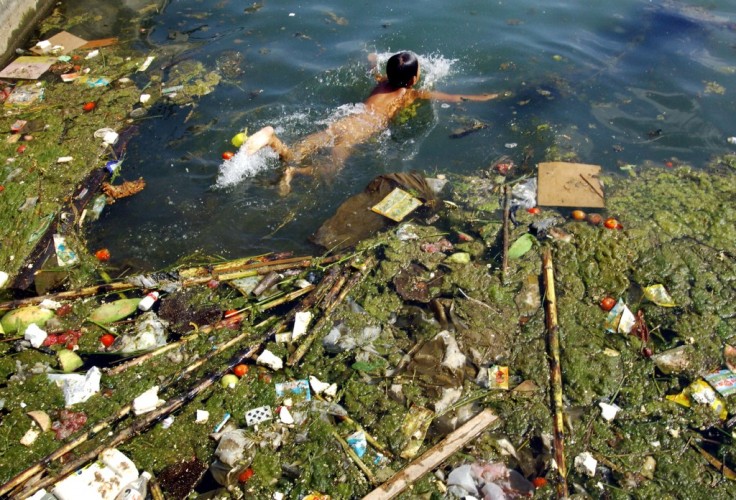Wastewater Management: The Answer To The Global Water Crisis?
Published on by Judith Jideonwo, Water & Ecosystems Intern at White House Council on Environmental Quality in Government
The world is facing a global water crisis. 1.2 billion people live in areas of water scarcity and this is projected to increase to 3 billion by 2025 as water stress and populations increase. Continuing population growth and urbanization, rapid industrialization, and expanding and intensifying food production will put pressure on water resources and lead to the increasingly unregulated or illegal discharge of contaminated water in developing countries. The way we produce our food uses 70 – 90 percent of the available fresh water, much of this water is returned to the system with additional nutrients and contaminants. It is a domino effect as downstream agricultural pollution is joined by human and industrial waste. Globally, two million tons of sewage, industrial and agricultural waste is discharged into the world’s waterways. This wastewater contaminates freshwater and coastal ecosystems, threatening food security, access to safe drinking water and providing a major health and environmental management challenge. Luckily, wastewater doesn’t have to be a chronic problem. Rather, it can serve as an opportunity to address the global water crisis. Well-managed wastewater can make a positive impact on the environment and lead to improved food security, health and economy development.
The use of sustainable wastewater reuse and management would enable developing countries address several water resource management challenges they face. Adopting sustainable wastewater management would allow developing countries to: (i) boost their water supply and close the demand gap by decreasing net water demand; (ii) reduce nutrient discharge to the environment and loss of freshwater; (iii) manage the recharge of surface and groundwater to optimize quality and quantity; (iv) control the problem of over-abstraction of surface and groundwater; (v) increase water use efficiency by allowing manufacturing industries use high-quality reclaimed water; and (vi) increase local ecological benefits through the creation of wetlands and urban irrigation.
Two boys fill a container with drinking water from a leaking pipe over polluted water in Noida in the northern Indian state of Uttar Pradesh. Photo: Reuters
Global water scarcity and an increasing population worldwide makes wastewater treatment and recycling an important strategy for economic development. The global population is expected to exceed nine billion people by 2050. As use and demand for water grows, so does the volume of wastewater generated and the demand for the treatment and reuse of this water. However, most of this demand growth will take place in developing countries, particularly in urban areas that do not have adequate wastewater infrastructure and resources to address wastewater management in an efficient and sustainable way. This is due to poor governance, a lack of effective regulations, and inadequate financing. Having inadequate wastewater infrastructure and management systems for the increasing volume of wastewater that is being produced is the core of the wastewater crisis. Currently, an estimated 90 percent of all wastewater in developing countries is discharged untreated directly into surface water bodies. Untreated or inadequately treated wastewater that is essentially reintroduced into the environment leads to degradation of the receiving water bodies and is often reused for drinking water and irrigation in water scarce developing countries.
Young boy in Kenya collecting unsafe water from contaminated water source. Photo: freshwaterworldcrisis
Contaminated water from inadequate wastewater management presents significant challenges for safeguarding human health and protecting the environment. It also restricts development and increases poverty through costs to health care and lost labor productivity. Over half of the world’s hospital beds are occupied by people suffering from water related diseases. Diarrheal diseases make up over four percent of the global disease burden, 90 percent of which is linked to environmental pollution and a lack of access to safe drinking water and sanitation. Poor wastewater management presents a global threat to human health and wellbeing, with both immediate and long-term consequences for efforts to reduce poverty or sustaining the integrity of some of our most productive ecosystems. Sustainable wastewater management can no longer be a luxurious option, but must be adopted as a practical solution that can be harnessed to boost public health, secure the sustainability of natural resources, to solve water crises being faced many developing countries.
Residents gather to collect water at a contaminated reservoir in Dafed village in southern Somalias’s Lower Shabelle region during a cholera outbreak. Photo: Reuters
Worldwide, almost 800 million people still do not have access to safe water. With unevenly distributed freshwater resources and disproportionate population densities globally, water demands exceed supplies in regions with more than 40% of the world’s population. Cities, such as Ashkelon in Israel, are investing in seawater desalination to produce drinkable water. But desalination is highly energy intensive, produces waste and its application is often limited to coastal locations. An alternative and viable option to address water scarcity challenges is to reclaim the discharge wastewater and treat it to a quality suitable for safe human consumption. Investing in wastewater management will generate significant returns, as comprehensive and sustainable wastewater management in combination with sanitation and hygiene is central to good health, food security, economic development and jobs. However, many countries fail to realize these returns because most of their wastewater infrastructure are either outdated, not designed to meet local conditions, poorly maintained or entirely unable to keep pace with rising urban populations. So how can we achieve sustainable wastewater management that will adequately address water scarcity, ensure environmental protection and protect human health?
Waste accumulates in Phillipines body of water due to unregulated waste discharge as fisherman operate nearby
A sustainable future requires urgent global action for immediate, targeted, and sustained investment to improve wastewater management. The public sector including national, provincial and local governments in developing countries must be more proactive in funding wastewater management. To ensure that investments in wastewater management effectively address water quality and supply issues, wastewater systems should be designed to (i) reduce the volume and extent of water pollution through preventative practices; (ii) capture water once it has been polluted; (iii) treat polluted water using appropriate technologies and techniques for safe return to the environment; (iv) safely reuse and recycle wastewater thereby conserving water and nutrients; and (v) provide a platform for the development of new and innovative technologies and management practices. If investments such as these are scaled up appropriately they will generate social, economic and environmental benefits. Subsequently, it will require not only investments, but also careful and comprehensive integrated water and wastewater planning and management at national and municipal levels. To be successful and sustainable, wastewater management must be an integral part of rural and urban development planning, across all sectors, and where feasible transcending political, administrative and jurisdictional borders. These should also be accompanied with regular monitoring and appropriate regulations necessary to minimize the risks to public health and the environment.
A child swims in a polluted reservoir in Pingba, in southwest China’s Guizhou province. Photo: China Daily/Reuters
2.6 billion people, almost half the population of the developing world do not have access to adequate sanitation and at least 1.8 million children under five years old die every year due to water related diseases. Under-dimensioned and aged wastewater infrastructure is already overwhelmed, and with predicted population increases and changes in the climate the situation is only going to get worse. It is clear that future demands for water cannot be met unless wastewater management is adopted and advanced globally. Without better wastewater infrastructure and management, millions of people will continue to die each year due to water related diseases and there will be further losses in biodiversity and ecosystem resilience, undermining prosperity and efforts towards a more sustainable future.
Media
Taxonomy
- Water Resource Management
- Water Supply
- Water & Wastewater
3 Comments
-
Hi all,I am currently working on terms of reference to commissioned study to an institution with regards to Environmental flow assessment, In my project there is a popular River called Katuma which is crossing the Katavi national park, there is high demand for water particularly in the upstream as there is intensive irrigation. EFA will assist the basin (Lake Rukwa basin authority ) in its water allocation interventions. For IWRM expert and EFA . Kindly needs inputs on the specific practical items to consider in the whole course of the study..........
-
Wastewater is indeed big problems, the urban streams has todate turns into the open sewers, everywhere!
-
You made a very informative overview of the healthy fresh water scarcity compared to the demand. The history of water supply and use compared to the waste water treatment and possible reuse needs a "Jeremy Rifkind" view on the life and coexistence at all levels of all societies. It is fare from achieved yet, but I hope the information and education explosion will change the birthrate globally and the attitude of everyone not to consume more than needed and to be very well aware of what is needed compare what is actually consumed.
